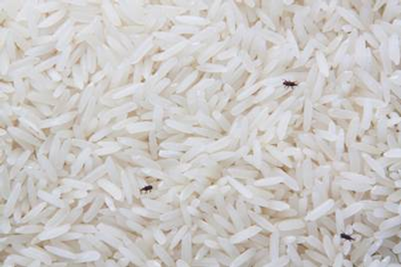How do glycidyl esters and MCPD esters get into our body?
Fats and oils are refined to meet food quality and safety standards before they are used as an ingredient in food. During this process, such fats and oils are heated at high temperatures (>200⁰C). A series of reactions break down the fats and oils to form a compound known as glycidyl ester. At the same time, MCPD esters can also be formed if the reactions involve chloride ions (which is usually present in trace amounts in the liquids used to refine the fats and oils to improve their quality). The formation of glycidyl esters and MCPD esters can happen during frying, baking, roasting, and industrial processing.
The level of glycidyl esters and MCPD esters formed during refining varies. For vegetable oils, it is dependent on several factors associated with the source plants or trees, including the climate, soil and growth conditions, genotype, and harvesting techniques.1 The temperature, duration, as well as the presence of precursors can also affect the level of glycidyl esters and MCPD esters.
Refined fats and oils are widely used in food manufacturing, which introduces glycidyl esters and MCPD esters into the food products we consume. It is impossible to prevent the occurrence of such compounds in food products.
When food containing glycidyl esters and MCPD esters are consumed, they will be digested and converted into glycidol and MCPD respectively. Because food that contains glycidyl esters would also be likely to contain MCPD esters, it is expected for people to be exposed to both glycidol and MCPD at the same time.
Are glycidol and MCPD safe to consume?
Although studies have shown a potential for glycidol and MCPD to cause cancer in rats, there is currently no conclusive evidence to show that these substances can similarly cause cancer in humans. Therefore, the current scientific information suggests that the food safety risks of glycidol and MCPD remain low.
Nevertheless, international organisations such as the Codex Alimentarius Commission (CAC) have taken a precautionary approach to food safety. They recommend the “As Low and Reasonably Achievable” (ALARA) approach to reduce any food safety risks that could potentially be caused by glycidol and MCPD. This means that during food processing, the industry should implement measures to minimise the levels of glycidol and MCPD in food.
What is SFA doing?
SFA adopts a science and risk-based approach to food safety and has in place an inspection and surveillance programme for food sold in Singapore. SFA has been conducting studies to monitor the level of processing contaminants in Singapore’s food supply. Processing contaminants have been found in low levels in some foods such as oil, butter, and milk powder. However, these levels are comparable or lower than the levels detected in the available literature and are unlikely to pose a safety concern. SFA also regularly monitors notifications on food products sold overseas and are alerted to recalls issued by food safety regulators overseas. We have found that the number of notifications related to glycidol and MCPD in food has generally been low and do not constitute a food safety concern.
Nevertheless, SFA encourages the industry to adopt practices recommended by the CAC to reduce the levels of glycidyl esters and MCPD esters in foods. These practices are detailed in a document published by the CAC2, and are based on Good Agricultural Practices (GAP) and Good Manufacturing Practices (GMP).
Other countries such as Australia, New Zealand and the US have also taken similar approaches. The reduction of glycidyl esters and MCPD esters levels in food would help in reducing one’s exposure to glycidol and MCPD, which are formed during digestion of glycidyl esters and MCPD esters respectively.
What can consumers do to reduce their exposure to glycidol and MCPD?
While SFA puts in place food safety measures, consumers can also play their part. Here are some tips which consumers can take to reduce their exposure to glycidol and MCPD in food:
Avoid excessive consumption of food that is rich in fats and oils, which are commonly associated with glycidol and MCPD.
Avoid extended cooking times when baking cookies, biscuits, or crackers, as well as when frying food, to reduce the amount of glycidyl esters and MCPD esters found in these foods.
Use moist-heat cooking methods (such as steaming and stewing) if possible
Maintain a balanced and varied diet to reduce the intake of glycidyl esters and MCPD esters.
References
Arris, F., Thai, V., Manan, W. and Sajab, M., 2020. A Revisit to the Formation and Mitigation of 3-Chloropropane-1,2-Diol in Palm Oil Production. Foods, 9(12), p.1769.
Codex Alimentarius Commission, 2019. Code of Practice for the Reduction of 3-Monochloropropane-1,2- Diol Esters (3-MCPDEs) and Glycidyl Esters (GEs) in Refined Oils and Food Products Made With Refined Oils.
About the Author
Johnny Yeung is a Senior Scientist from the Risk Assessment and Communications Department of the National Centre for Food Science. With a Masters in Medicinal Chemistry from Imperial College, Johnny leads SFA’s Novel Food Assessment Team and has been deeply involved in data and digitisation projects for food safety assurance in Industry 4.0. He is currently doing his PhD in Population Health in the Lee Kong Chian School of Medicine.




